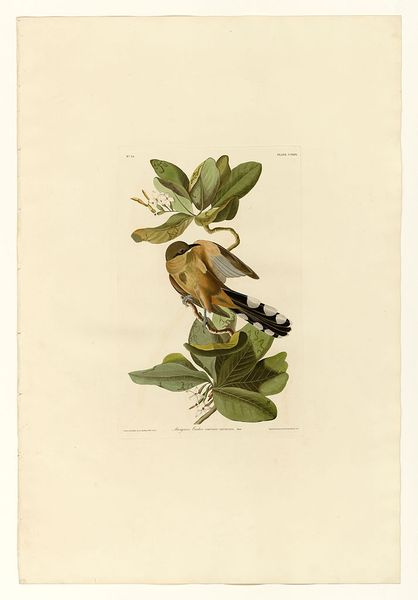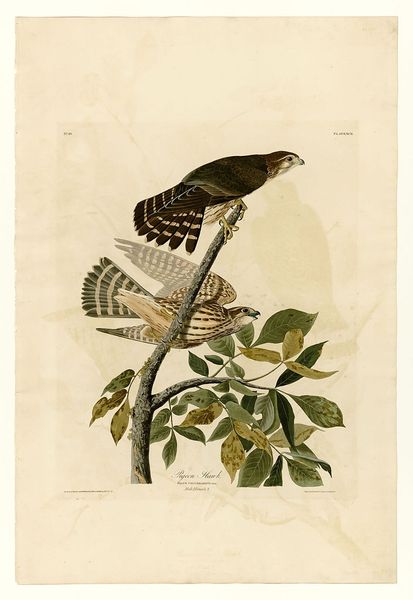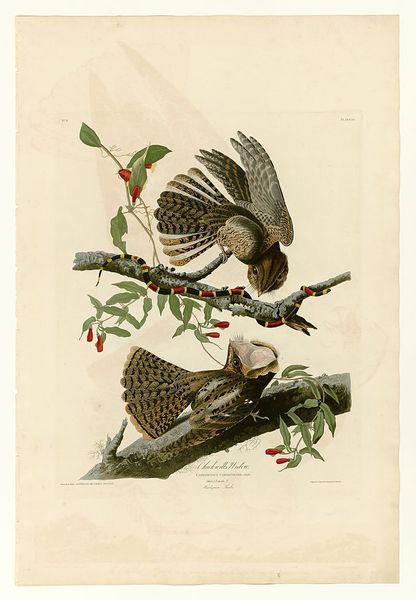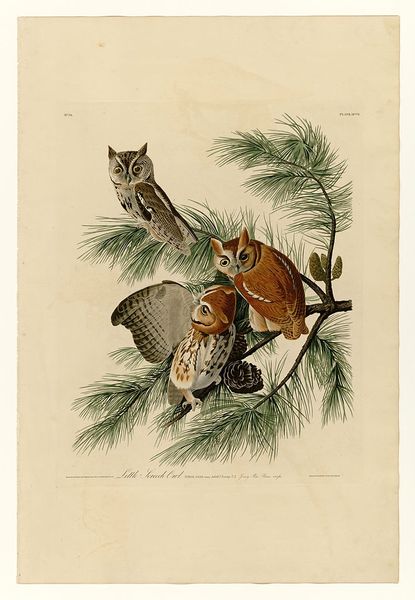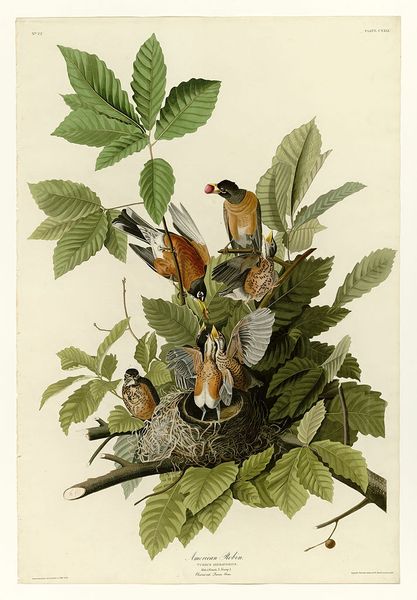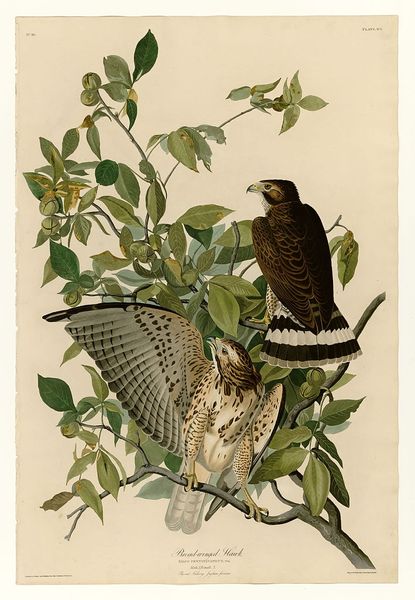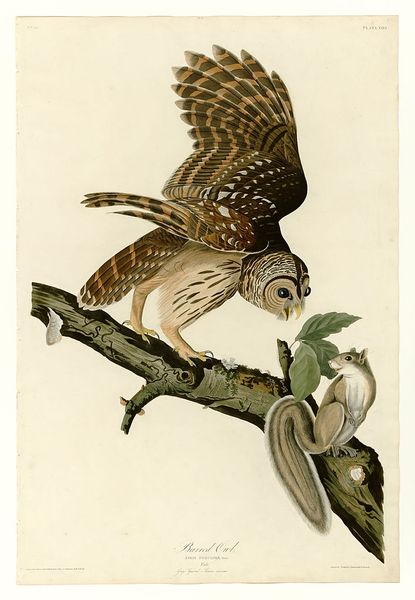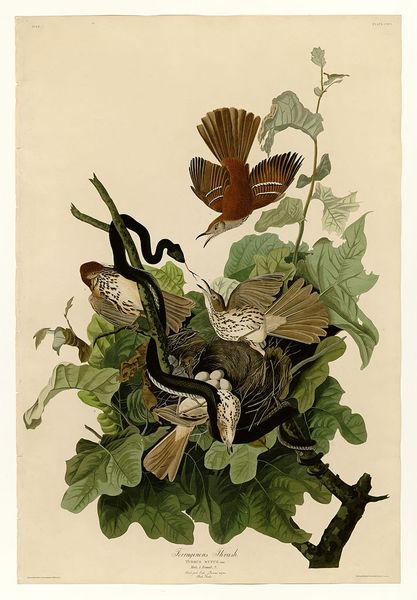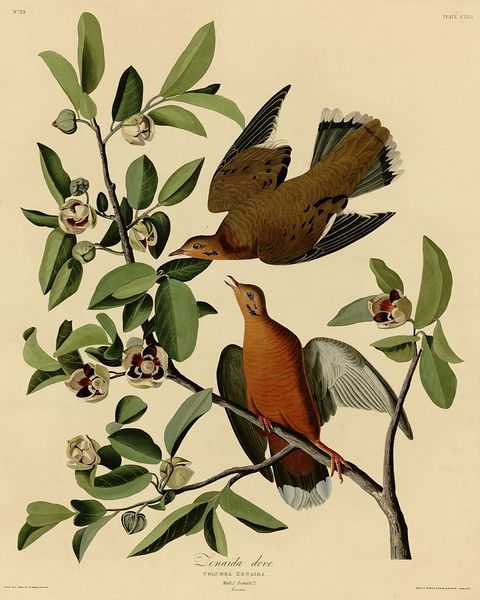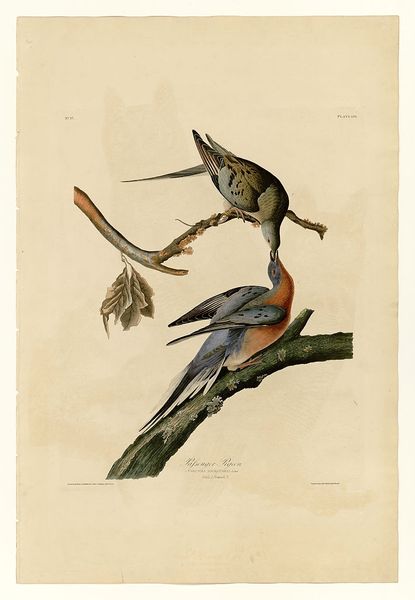
drawing, painting, watercolor
#
portrait
#
drawing
#
painting
#
bird
#
watercolor
#
watercolour illustration
#
botany
#
academic-art
#
naturalism
Copyright: Public domain
Curator: This is Plate 142, "American Sparrow Hawk," by John James Audubon, rendered in watercolor. Editor: The immediate feeling is… dynamic. The three hawks, the foliage—everything is charged with potential energy, about to burst into motion. Curator: Audubon aimed to capture the spirit of these birds, not just their likeness, at a time when ornithology and art were intertwined with colonial expansion. The romanticized depiction of the natural world often served the interests of settlement and resource extraction. Editor: The rendering of the feathers, look at the meticulous layering of browns and tans creating depth, especially on the hawk perched to the left. The precision borders on obsession! Curator: His work sits within a broader narrative of scientific exploration intertwined with the problematic assertion of dominance over nature and Indigenous lands. The seeming objectivity obscures a loaded, gendered gaze of control. Editor: Perhaps. But I can't help admire how he manipulates value to define form. Notice how he uses backlighting from the top to emphasize the downward momentum. There’s even implied light reflecting off of the hawk’s plumage on the lower right. Curator: Yes, and while appreciating his artistic skill, let’s also contemplate the impact of this representation on perceptions of nature. His vision helped shape—and still shapes—how we see the natural world and our place within it. A perspective that requires careful, critical consideration today. Editor: A valid point. The detail pulls you in, but maybe a broader view can stop you from becoming completely absorbed into its beauty. It leaves you something more than mere aesthetic wonder. Curator: Indeed, the interplay between art, science, and history demands constant re-evaluation. Editor: I leave with renewed attention, looking again at the interplay of texture and movement. Thanks to you, it has shifted the focal point.
Comments
No comments
Be the first to comment and join the conversation on the ultimate creative platform.
